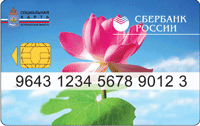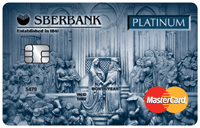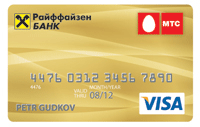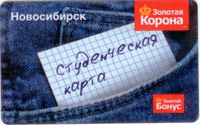
The Russian Market of Payment Cards: Uneasy Time or New Opportunities
Despite the global financial crisis, Russia is still one of the most dynamic payment card markets, both in Former Soviet Union countries, and Europe as a whole. Good dynamics is shown both by the market of issue and acquiring, and by the payment card servicing infrastructure.
Card issuance
 According to the Bank of Russia, as of 22 September, 2009, 709 credit organizations are bank card issuers and acquirers, 669 organizations are just issuers and 635 – acquirers.
According to the Bank of Russia, as of 22 September, 2009, 709 credit organizations are bank card issuers and acquirers, 669 organizations are just issuers and 635 – acquirers.
As of July 1, 2009, the Russian banks issued 122,897,457 cards in total. It was almost by 10% (11,393,610 cards) as much as of July 1, 2008, and approximately by 19% (19,581,675 cards) as much as of the beginning of 2008. At the same time, in the eyes of analysts, the number of active cards on the Russian market is just 50% of all cards issued.
Speaking of card issue volume in the regions, Moscow and Moscow region are still leaders. According to the Central Bank of Russia, banks in both regions together have issued over 51 million cards (it's 41.5% of all cards issued in Russia). St.-Petersburg (over 7.7 million cards or 6.26% of all cards) and some other regions, which were considered as the most perspective card markets in past years, are also among leaders: Sverdlovsk region (more than 4 million cards, or 3.25%), Tyumen region (more than 3 million cards, or 2.44%), Chelyabinsk region (almost 2.8 million cards, or 2.27%), Samara and Novosibirsk regions (more than 2.5 million cards each, or 2.03%), Krasnodar region (over 2.6 million cards, or 2.1%). Besides, last years we could observe good dynamics in Tatarstan (2.86 million cards, or 2.3%) and Bashkortostan (over 3.26 million cards, or 2.65% of all cards). During the first half of 2009, transactions, with cards, issued in Russia, totaled 618,435,012 (including transactions abroad) on the sum of 2,277,726 million roubles.
Thus, the number of transactions has grown by 17.6% and the volume of transactions – by 6.8% as compared to 2008. In the second half of 2009 cash withdrawal operations totaled 71% of all operations, made by Russian bank cards, and it's almost 91% of the aggregate card turnover. Approximately 74–75% of all the cards, issued in Russia are Visa Inc. and MasterCard Worldwide products.
 As for card products of the Russian payment systems, Zolotaya Korona cards (“Golden Crown”) are the most popular today. As of July 1, 2009, the number of all issued cards of this payment system exceeded 19 million, that is to say 15.5% of all cards, issued in Russia. As of the end of the second half of the year the market share of United Russian Payment System (former SBERCARD) cards, which were issued in amount of 3.5 million, was 2.8%.
As for card products of the Russian payment systems, Zolotaya Korona cards (“Golden Crown”) are the most popular today. As of July 1, 2009, the number of all issued cards of this payment system exceeded 19 million, that is to say 15.5% of all cards, issued in Russia. As of the end of the second half of the year the market share of United Russian Payment System (former SBERCARD) cards, which were issued in amount of 3.5 million, was 2.8%.
The aggregate market share of co-brand cards NCC|UC (over 1 million cards) totaled 0.8%. And Union Cards (over 6 million) got a 4.8% share of all issued cards.
The aggregate share of cards of other international (AmEx, Diners Club, China UnionPay) and Russian payment systems, including cards of one issuer, is variously estimated at not more than 2% of the Russian market. Thus, the share of Diners Club cards, now, is about 0.02% of the total issue (over 30 thousand cards).
In expert opinion, for the last 5–7 years the competition between Russian and international payment systems the latter have been steadily beating their opponents, and domestic payment systems can hardly win back any significant share of the market. Some experts believe that the further development of Russian payment systems is probably possible only if the government provides their strong administrative support within the framework of the national payment system which is supposed to be based on one of the existing Russian systems. It is expected that the draft law “On the national payment system”, initiated by the RF Ministry of Finance, the Central Bank of Russia, the Russian Union of Industrialists and Entrepreneurs and Russian Europay Members' Association, will be submitted for consideration of the Government of the Russian Federation as soon as November, 2009.
Also, it should be noticed, that Russian payment card systems do not yield to their international counterparts technologically, insofar it concerns both security level and reasonable cost of transactions.
The first half of the year 2009 resulted in some changes in the top-5 of the largest Russian banks by the number of issued cards in circulation. In particular, Rosbank reduced the number of cards approximately by 25% and lost its positions. And, if following the results of 2008 the TOP-5 of the market leaders consisted of Sberbank of Russia (30.4 million cards as of January 1, 2009), Alfa Bank (5.13 million cards), VTB24 (3.92 million cards), URALSIB BANK (3.82 million), and Rosbank (3.71 million), than, following the results of the first half of the year 2009 Rosbank left the TOP-5 and Transcreditbank took its place, cause increased the number of cards from 2.78 million to 2.8 million cards.
 The rest of the TOP-5 banks, for the first 6 months of 2009, also have shown a certain growth: Sberbank of Russia – up to 33.9 million cards, Alfa Bank – to 5.25 million cards, VTB24 – to 4.93 million cards, URALSIB BANK – to 4 million cards.
The rest of the TOP-5 banks, for the first 6 months of 2009, also have shown a certain growth: Sberbank of Russia – up to 33.9 million cards, Alfa Bank – to 5.25 million cards, VTB24 – to 4.93 million cards, URALSIB BANK – to 4 million cards.
As is seen from these figures, Sberbank of Russia is still the largest national issuer leaving all its competitors far behind. As of September 1, 2009 Sberbank issued more than 35.4 million cards. It is interesting that according to The Nilson Report magazine, as of the end of 2008, Sberbank was the largest issuer of Visa Inc. and MasterCard Worldwide cards not only in Russia, but also in Europe as a whole.
Card acquiring infrastructure
As of July 1, 2009, the number of ATMs installed in Russia was estimated at 82,800 machines, 75,000 of which had only cashout function, and 20,000 – with cashin/ cash-out function. As compared to the second quarter of 2008, the number of ATMs in Russia has grown by 18.6% (+13 000 machines). Furthermore, the number of ATMs with cash-out function has grown only by 20%, but ATMs with cash-in function – by almost 38%.
According to “ATMs & Cash Dispensers Central & Eastern Europe” research, held by Retail Banking Research Ltd., in 2008 the installed base of Russia has outnumbered such European countries as France, Germany, Spain and Great Britain, so, Russia has become the largest ATM market in Europe, showing the maximum growth rates of an ATM network within the latest 8 years. 19,000 ATMs were installed in the country in 2008 alone.
Sberbank of Russia became the leader by the number of installed АТМs, both among credit institutes, and non-banking operators of ATM networks: by 1 September, 2009, Sberbank has installed and put into operation about 21,000 ATMs, with 20% of them having cash-in function, as well as about 8,500 informationpayment terminals.
By 1 July, 2009, the ATM network of VTB24 consisted of almost 3,600 machines, URALSIB BANK had more than 2,500 ATMs, Moscow Privat Bank – over 2000 ATMs, Master Bank, TransCreditBank and Rosbank – almost 2,000 ATMs each, Bank of Moscow had over 1800 machines.
The most part of ATMs are installed in Moscow and Moscow region (over 17,000 machines) and St.-Petersburg (over 5,300 ATMs). Three more leaders are: Tyumen region (over 3,250 ATMs), Sverdlovsk region (more than 3,000 ATMs) and Nizhniy Novgorod region (more than 2,900 ATMs). By the end of June 2009, the number of POS-terminals installed in Russia exceed ed 378,200 devices, i.e. grew almost by 5% as compared to 2008. 65,500 POS-terminals are used for cash withdrawal and 312,700 devices are established at merchants' locations. Moscow and Moscow region have the largest POS-terminal network in Russia (86,300 devices), St.-Petersburg – more than 23,000 devices, Tyumen region – 12,600 devices, Sverdlovsk region – more than 11,800 devices and Krasnodar region – over 7,600 POS-terminals.
Besides, 50,400 imprinters are established in Russia (5,300 – for cash withdrawal and 45,100 – in merchants).
Trends and prospects
Among the most considerable events of the Russian card market in 2008 – the first half of 2009 entry of China UnionPay international payment system on the Russian market is worth mentioning (Eurofinance Mosnarbank started issuing co-branded cards – China UnionPay and Union Card), as well as some acquiring projects of accepting and servicing cards of this payment system, realized by a number of banks (TransCreditBank, UBRD, Bank of Moscow, AVTOVAZBank, Moscow Privat Bank) and NCC|UC payment system.
The financial crisis, undoubtedly, affected the market of bank cards, especially the credit card sector (as well as the entire lending sector). At the first stage of the crisis in Russia we could watch the slashing volumes of consumer loans, caused by complicated access to external borrowings and their higher cost for the banks. As the result, the growth of the market of credit cards substantially slowed down: large players of credit card sector lowered their volumes of credit card issue, focusing on more flexible credit products (for example, they started issuing “paper-based” loans via retailers), or maintaining an existing portfolio of credit cards at the current level. Almost all Russian banks have toughened up their requirements to potential credit cardholders as well as have lowered their credit limits, and also (in the case of cards with agreed overdraft) overdraft limits that has reduced the volume of money accessible to a credit cardholder. Today the considerable part of Russian banks prefers to issue credit cards only for reliable customers: for employees of the companies-clients within the terms of salary and other corporate projects, for depositors and banks' borrowers with positive credit histories.
Besides, the crisis has affected some other key trends in the Russian card market. For example, Russian banks started focusing mostly on VIP clients service, justifying the 20/80 rule, which, according to statistics, gives about 70% of income in the retail segment. Against the reduction of the number of bank retail offices in total, especially outside Moscow (according to the Central Bank of the Russian Federation, from the beginning of 2009 the number of generic bank offices throughout Russia has reduced almost by 2.5%, from 42,231 to 41,200 offices), banks have energetically started opening offices for VIP clients. So, Russian Standard Bank has opened two VIP offices – in Moscow and Novosibirsk, and is going to open such offices in St.-Petersburg and other big cities. International Financial Club (IFC), bank of ONEXIM Group, also has opened two VIP offices: in Moscow and in Moscow region, and till the end of 2010 it intends to increase their number to seven. HSBC Bank has opened an office for its VIP clients in Moscow.
VTB24 already has such offices in Moscow and St.-Petersburg, and at the beginning of October of this year, it intends to open a VIP office in Krasnodar, and then in Yekaterinburg, increasing the number of such offices up to five. Alfa Bank is going to increase the total number of its VIP offices up to eight. Barclays Bank and even Sberbank of Russia, that from the moment of its foundation traditionally focused on the mass customer, plan to open VIP offices.
At the same time, leaders of the card market started developing card-based VIP programs extensively, stimulating well-off clients to be more active in getting and using cards of premium class in merchants.
So, Sberbank of Russia initiated issuing Platinum cards of MasterCard Worldwide and Visa Int. payment systems; VTB24 intends to issue Visa Platinum cards; SDM-BANK has started issuing MasterCard Platinum debit and credit cards in roubles and US dollars; Bank24.ru has announced its start of issuing Visa cards of Premium segment; Stroycreditbank has started issuing Visa Platinum cards; TRUST National Bank has declared its Visa Infinite card issuing. Alfa Bank offers Visa Infinite cards its VIP clients as a part of “A-club” service package (it's an exclusive club system of bank service). Those, who already have Alfa Bank Visa Gold and Visa Platinum cards, have got an access to different additional services raising appeal and comfort of their use. NOMOS-BANK held a special action “Platinum dream”, in the terms of which it offered its clients an opportunity to issue Visa Platinum or MasterCard Platinum card on favourable terms.
Rosbank has presented a payment card with Valentine Yudashkin design – Visa Platinum by V. Yudashkin. In its turn, Barclays Bank was the first bank in Russia, started issuing World MasterCard cards. The basic difference of the World MasterCard card from other premium products of this payment system is the unity and the obligatoriness of the set of privileges, provided to its holders which in this case does not depend on a policy and a strategy of the exact issuer, but is entirely guaranteed by MasterCard payment system.
International payment systems, also, held promo-actions among Russian premium card holders to make them use their cards, paying for goods and services, more readily. So, from May 1, till 31 July, 2009, everyone who paid for his (her) purchase at least 1,000 roubles by card could take part in Visa's “Find the spice of life with Visa” promoaction for Visa Gold and Visa Platinum card holders and win the grand prize.
MasterCard Europe and Russian Europay Members' Association announced the start of their MasterCard Favorites program for MasterCard Gold, MasterCard Platinum, MasterCard World, Signia MasterCard cards in Russia. MasterCard Favorites' collection of privileges, developed specially for Russian cardholders, is an addition to the international MasterCard Global Premium Collection program.
There are some other appreciable trends on the Russian card market. And we would like to point out, that Russian banks now are more active in such sector as socially significant projects. So, by 1 September, 2009 the volume of Sberbank-Maestro Social card issue, intended for obtaining pensions, benefits, subsidies and other social security payments, exceeded 6.8 million cards.
Regional banks of Sberbank of Russia started their social card projects across the country. For example, in Astrakhan, such a joint social card project is launched by Sberbank together with the local branch of the Pension Fund of Russia and the regional government.
21,000 customers have already got their Single social cards of Krasnoyarsk region. This is a joint project of East-Siberian bank of Sberbank of Russia and Krasnoyarsk region government, which at present covers only Norilsk and Zelenogorsk. Sberbank also has started its “Social card for the Smolensk region resident” project in Roslavl. And North Caucasian bank of Sberbank has started issuing Social cards for Nevinnomyssk residents.
Moscow Industrial Bank (MInB) has got the right to issue cards for the project of multipurpose social cards in Raduzhniy, a small town in Siberia not far from Baikal lake. In its turn, Bank of Khanty-Mansiysk actively implements a social project, giving special attention to pensioners. Recently the bank has issued a 6,000th social card.
 By April 2009, more than 5,000 residents of Gorno-Altaisk, who were supposed to be given any kind of social payments, got their Social cards for the Republic of Altai resident (a joint project of Zolotaya Korona payment system, El Bank and Noosphera Bank).
By April 2009, more than 5,000 residents of Gorno-Altaisk, who were supposed to be given any kind of social payments, got their Social cards for the Republic of Altai resident (a joint project of Zolotaya Korona payment system, El Bank and Noosphera Bank).
One more trend is active development of remote channels to promote services: today almost every Russian bank, issuing cards, has its own online banking system, and in many banks SMS notification systems have been replaced with full-rate SMS payment systems.
Last years the range of services, provided in ATMs and information kiosks, has been expanded considerably.
There is one more significant trend. Banks focus on creating zones and completely automated offices of bank self-service, for cardholders as well.
Apart from the traditional lines of card business development, the Russian banking community, IT companies and big retailers now show a great interest in mobile and Internet commerce, contactless payment technologies, and also in organizing and improving payment card acceptance on the variety of vertical markets, including gas stations and catering business, etc.
Many experts agree upon the significance of the trend, that traces its roots in the crisis, concerning the growing role of government as the regulator in the banking sector in whole, and in the card payments segment particularly. So, for example, in the autumn of 2008 the Central Bank of the Russian Federation got the authority to limit deposit rates in commercial banks. At present, a deposit rate can be not more than 16.84%. If a commercial bank sets a higher rate, the Central Bank will send it recommendations to decrease its rate. And, if this bank does nothing to correct its deposit rates, the regulator will use the received authority to make compulsory restrictions.
 Against this background, recently appeared in some mass-media unofficial information about the Central Bank's plans to limit tariffs for bank cards servicing, forcedly, just got a backlash of all market players at once. And, the last thing. Not so long ago the Bank of Russia joined the authors and initiators of the draft law “On the national payment system” . So, any forecasts of how it will be, depend very much on what kind of regulations the Government will undertake and how far it is ready to go in its reforms as a regulator of the bank sector.
Against this background, recently appeared in some mass-media unofficial information about the Central Bank's plans to limit tariffs for bank cards servicing, forcedly, just got a backlash of all market players at once. And, the last thing. Not so long ago the Bank of Russia joined the authors and initiators of the draft law “On the national payment system” . So, any forecasts of how it will be, depend very much on what kind of regulations the Government will undertake and how far it is ready to go in its reforms as a regulator of the bank sector.
Leading experts of the payment card market believe that all these things are the reflection of the arising tendency of serious structural changes in the Russian card market to be expected this or next year. In particular, it's highly possible, that non-banking structures, which became real competitors in the eyes of banks, issuing cards, just not long ago, will take a considerable share of the market of cashless payments. It concerns operators of online payment systems, networks of payment terminals and the largest mobile companies which have reasonable ambitions to become the largest operators of retail payments in the country.
They are faster and more flexible in their reaction to market changes, and also have a good knowledge of clients and their needs. And it distinguishes them among other market players.
Anyhow, today the Russian market is waiting for great changes.
Journal: PLUS Journal 9 (149) 2009
Tweet
- Andrey Korolev: “Russian Card Business. Again at the crossroads …”
- The Russian Market of Payment Cards: Uneasy Time or New Opportunities
- Russian E-cash Systems Specify the Game Rules
- Complex Security for ATMs: New Approaches and Solutions
- Nautilus Hyosung: ATM Production on a Global Scale
- WebMoney Transfer: New Opportunities of E-commerce for Retail Banking
- Instant Optimization of Your Card Program
- Card Market of Azerbaijan: Growth Notwithstanding the Circumstances
- YARUS: a New Engine for Russian Acquiring
- Wireless Acquiring from VeriFone: on the Ground and in the Sky
- Forum “Russian Gas Stations and Payment Technologies 2009”
- OneSmart Club 2009 in Sochi: Results and Prospects
- MIPS: Celebration is over, but the Exhibition is going on!
- Calendar of Events October – December 2009